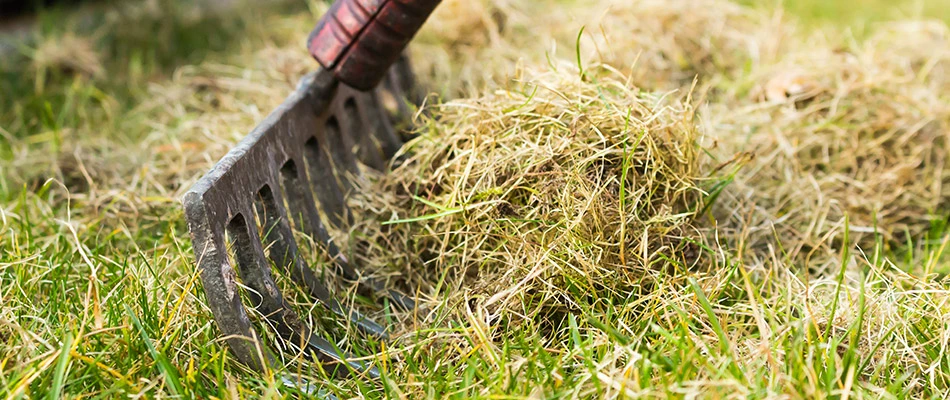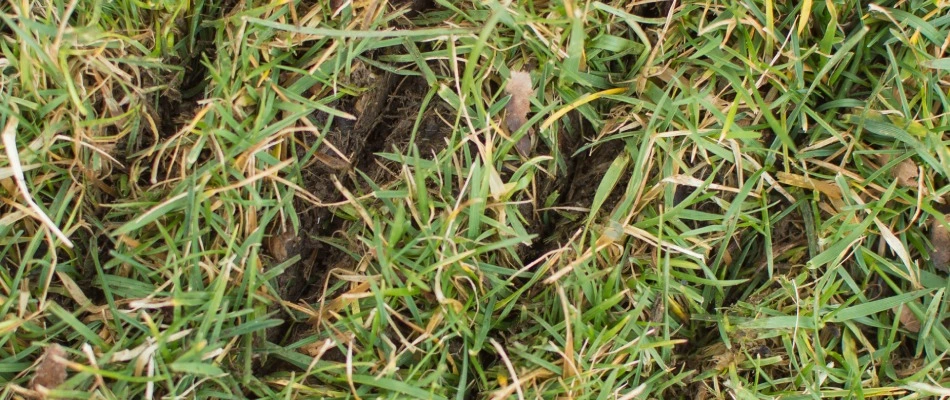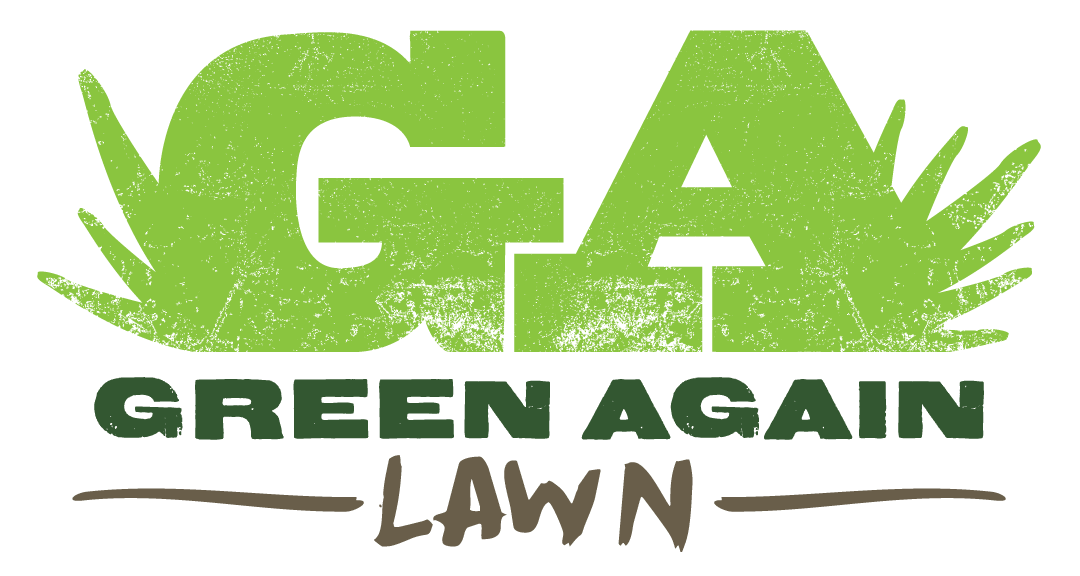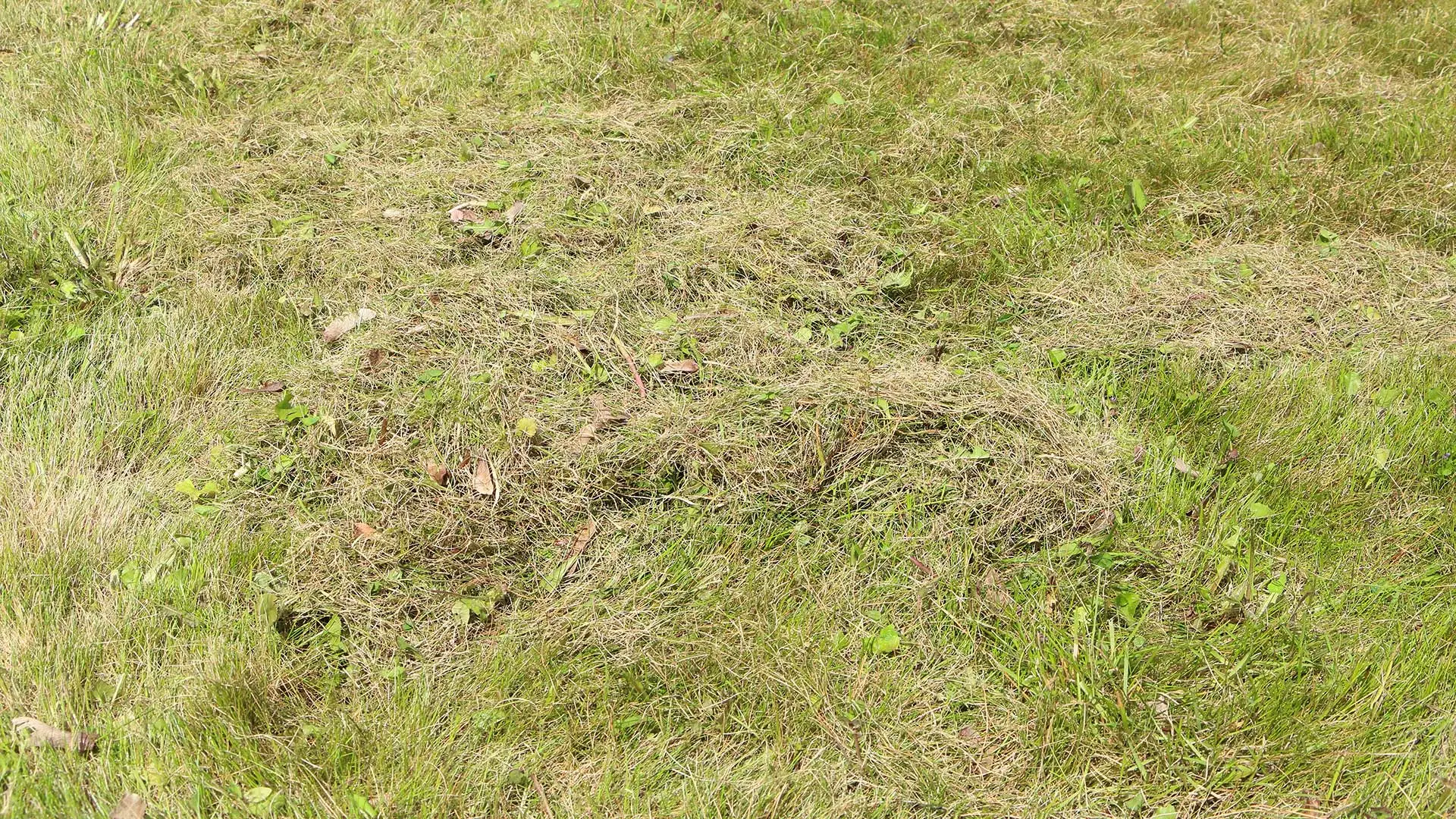When stems, grass clippings, leaves, and roots start to decompose, they form a layer called thatch at the base of your grass at the point where the grass stems meet the soil. A thin layer of thatch can actually be beneficial for your lawn since it will help maintain soil moisture and control soil temperature. However, if too much thatch forms on your lawn, it can cause serious problems. That's why you must know how to determine if your lawn in Kansas has too much thatch already! One indicator of excessive thatch is the presence of bare spots on your turf as this means the roots of the grass in these areas aren't receiving the nutrients that they need to grow strong.
You can also get a shovel and dig a bit of your lawn to check if the thatch has become too thick for nutrients, water, and air to flow to the roots. If there is a thatch buildup, verticutting is the best way to get rid of it. Keep reading to learn how you can determine if there is too much thatch on your lawn and why verticutting is the ideal removal option.
If your lawn has bare spots but water doesn't seem to help, thatch is likely in the way.

It can be disheartening to see bare spots on your lawn. If you have tried watering your turf and it doesn't seem to help, thatch might be the culprit. When thatch becomes too thick, it will prevent water and other vital resources from reaching the roots of your grass. This can cause your lawn to develop bare spots as it will be lacking the nutrients that it needs to thrive.
Take a garden shovel and take out a little bit of the lawn to determine the level of thatch.
Knowing when your lawn has too much thatch is vital in maintaining its health. One of the most effective ways to determine if the layer of thatch on your lawn has become too thick is to check and see it for yourself! Get a garden shovel and take out a little bit of your turf. You'll see the cross-section between the soil and the growing grass, and right in the middle of them is the thatch layer. The ideal thickness for thatch is less than one inch. Anything thicker than that and thatch becomes more harmful to your turf than it is beneficial. If your lawn has too much thatch, you will need to remove it so that your grass can flourish.
Another common sign of too much thatch on your turf is if it feels spongy or soft when you walk on it.
How do you get rid of thatch?

If your lawn has too much thatch, you'll need to get rid of it. We recommend verticutting as it is an effective way to get rid of the thatch on your lawn. This process involves using a machine with vertical blades that will remove the thatch without harming your grass.
Another benefit of verticutting is that you can proceed to sow new seeds after it's done! That is because the verticutting process allows the soil to breathe better and provides the grass seeds with an ideal place to lodge themselves. Not only will you eliminate thatch, but you can bring in new grass growth to replace the bare patches that are affecting your curb appeal.
Don't let thatch prevent your grass from thriving. Call our lawn care pros today to sign up for our verticutting service!
Thatch at its ideal thickness is not a problem, but when it begins to build up and cause issues, don't hesitate to reach out to our team! Our lawn care pros at Green Again Lawn offer verticutting services to remove thatch build-up from your lawn. If you own a home or business in Shawnee, Overland Park, Lenexa, KS, or a nearby area, we can help you. Call us today at (913) 209-3320 to get a quote for our verticutting service.




Comments (0)
Thanks for your comment!
Thanks for your feedback! Your comments have been successfully submitted! Please note, all comments require admin approval prior to display.
Error submitting comment!
There is a problem with your comment, please see below and try again.